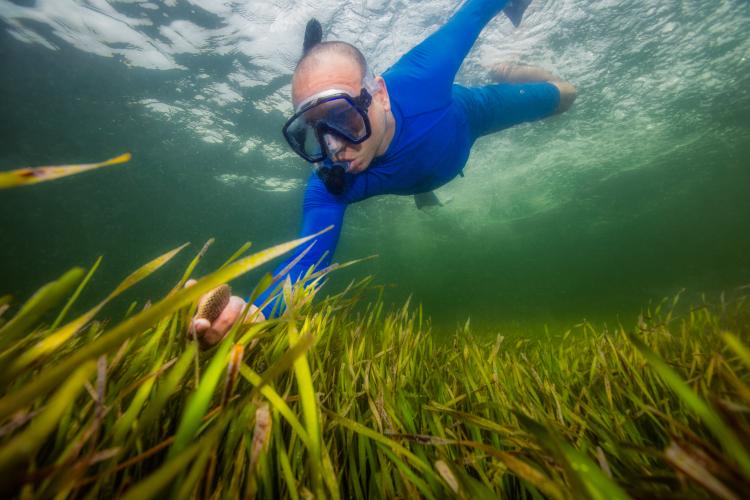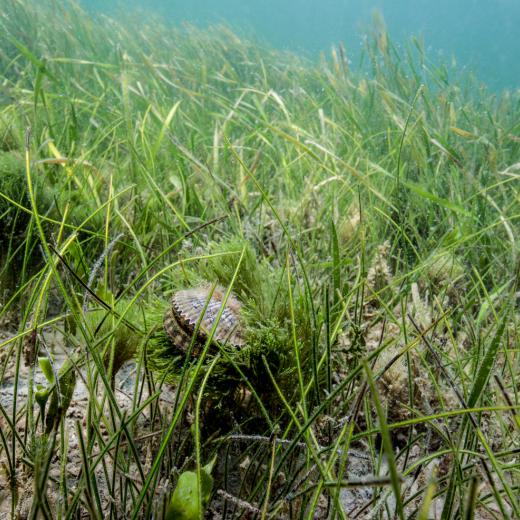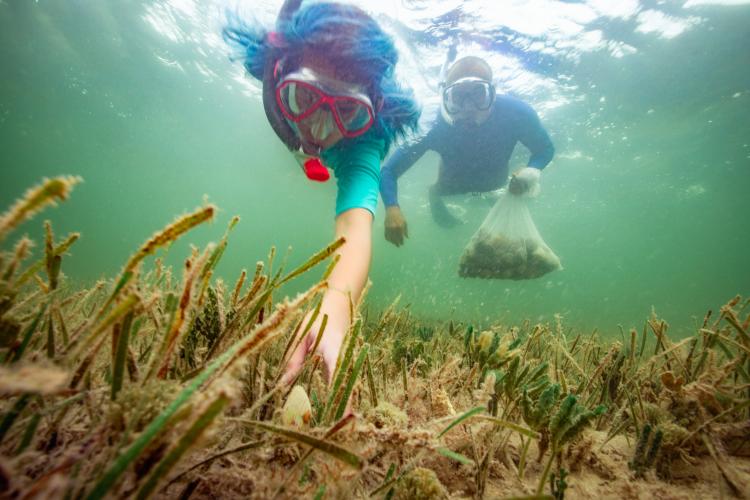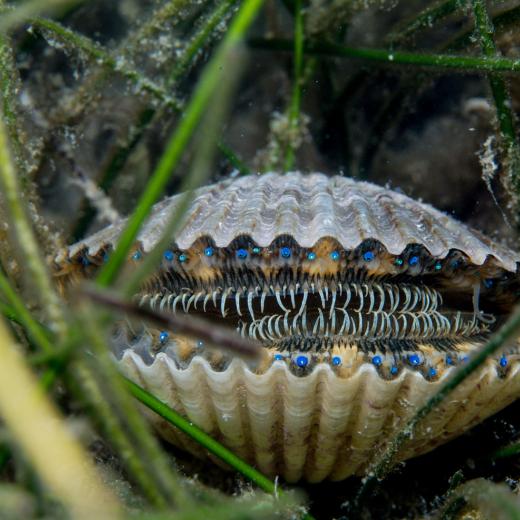Rainforest of the Sea
Scallop season is a journey into a magnificent hidden world lying just beneath the surface of the shallow edge of the Gulf of Mexico.
By Miles Saunders
It is already a blazing hot summer morning when we head for the Gulf of America on the Salt River. With the breeze blowing over our swiftly moving boat we hardly notice. The shoreline vanishes behind us and, not long afterward, a mysterious white line appears across the horizon ahead. It’s a great white fleet of boats.
It is the first week of scallop season. Captains stop to talk to each other, trading news on the best spots so far. Heads bob in the water. Dive flags wave in the light wind.
Cooled by the breeze, we slip into the warm bath-like water of the Gulf.
Beneath us lay another world…
A great green meadow stretches as far as the eye can see.
Small colorful fish circle above.
Reach out your hand and your fingers pass through blades of softly swaying grass.
We’ve come for the scallops but we’ve arrived in one of the most incredible places on earth: one of the largest seagrass beds in North America.


“Some people call it the womb of the Gulf of America,” says Tim Jones, manager of the Florida Department of Environmental Protection’s Big Bend Seagrass Preserve. With the Saint Martins Marsh Aquatic Preserve, it covers over a million acres of sea floor stretching from the Homosassa River to Apalachicola—Florida’s Big Bend.
It is a planetary gold mine of life. In fact, seagrass beds are so critical to so many living things that they are often called the rainforests of the sea.
“This particular area of Florida is one of the most diverse and biologically productive eco-systems in the world,” says Tim.
In fact, a single acre can support as many as 40,000 fish and 50 million invertebrates such as scallops. “There’s plenty of protection. Small fish that will develop into large species, like grouper, are essentially hidden in these seagrass beds until they grow to the size to leave them,” explains Clinton Dawes of the University of South Florida. “The fishing industry, shrimping industry, all these are dependent on sea grass beds.”
So, as it turns out, are manatees. It’s one of the reasons Crystal River and Homosassa are the Manatee Capital of the World. Hundreds of manatees spend their entire summer munching on sea grass in the warm Big Bend before seeking winter shelter in the springs of Kings Bay and the Homosassa River.
Loggerhead, Kemps Ridley and Green sea turtles also abound. “The Crystal River Homosassa area has more sea turtles than anywhere else in the state,” says Tim Jones. “It’s a really important foraging ground for juveniles.”
Seagrass flourishes in shallow water where sunlight filters to the sea floor. The underwater shelf of the Florida peninsula is uniquely suited since it stretches two hundred miles offshore. “The transition is very gradual, about one foot per mile, so you can go out thirty miles or more before you hit really deep water,” explains Tim Jones.
Because this shelf is tucked up into a corner of the Gulf of America, it creates what scientists call a zero energy environment. “It means there is very little wave action,” explains Clinton Dawes, “perfect for seagrass.”
The scallops, meanwhile, are tricky to find.
It doesn’t matter.
One discovery leads to another as we scan the bottom.
“You have these large seagrass beds and twenty feet away you have this hard bottom environment full of corals, sponges and different kinds of macro-algae,” explains Tim.


Scallops are what we’ve come to see, however, and at last I spot one. It’s hidden in the grass and, what’s more, it’s looking at me! As I dive down I see its blue iridescent eyes. It begins to flee but I snatch it up and slip it into a mesh bag wrapped around my wrist.
“Scallops are filter feeders,” says Tim. “The seagrass not only provides shelter but it provides them food to filter out of the water column.”
Now that I’ve spotted one, I can spot many. People call it an underwater Easter egg hunt. Before long, the mesh bag is too heavy to swim with. I surface back into the bright world of sun and sky. We’ve nearly reached our limit of scallops.
Before we leave, though, I submerge one more time into the underwater quiet.
The sun shines through the water in parallel bands.
The grass reaches back as it sways with the current.
A seahorse flits by.
The ancient dance—sun, earth, water, life—continues on….